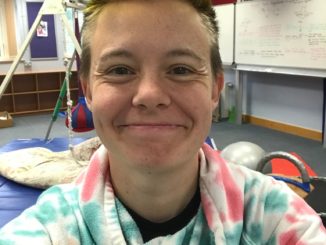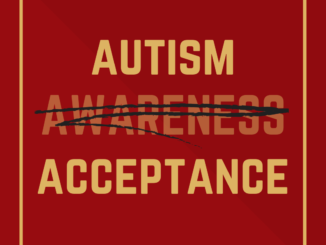The kid I’m working with is a hardcore gestalt language processor*. I notice that they’re singing a song while the two of us work side by side on an art project. I can tell some of the lyrics are about characters from Mario, but many of the words are hard to understand.
I think, “This could be a good opportunity to connect with them about something they enjoy.”
I think, “I know that sometimes scripts are ‘for me’ and sometimes scripts ‘aren’t for me’ — to borrow Rachel Dorsey’s language. What are some clues right now? Will I be intruding into this child’s state of ‘flow’ working on this project if I talk to them?”
I assess the situation. They’re working hard and focused, happily. The words they’re singing are muttered under their breath. This does not feel like a moment where the child is trying to talk to me about Mario, just singing for joy, to stim, for self-regulation. I stay quiet.
A few moments later, the child sings the same song, this time louder, at a conversational volume. We are both still doing art side by side but they are finishing up with the thing they were working on.
I think again “Maybe I could take the clue here and talk to them about Mario.”
My adult brain thinks of a way to start a conversation. I could ask: Is that song about Mario? Or I could ask: What’s that song from?
I remember that both of these would be examples of “imperative language” — where I am quizzing the child, where there is a “right answer”, where there is an expectation that they must respond.
I remember that these types of communication are necessary sometimes, but that they often don’t increase connection. Kids hear loads of this type of language from adults who are hoping to chat but don’t quite know how to do it. “What color is this?” “What sound does a sheep make?” “What did you do today?” The mental fatigue of constantly being questioned adds up over time.
I remember that I can use declarative language instead by just saying a sentence without expectation of an answer.
I say, “hey! I have played the Mario game before. I know those names.”
If the child wanted to ignore me and keep focusing on their work, they easily could. My sentence has given them an “out” because it is open-ended.
What they do in this instance is smile, and finish out the script, and then say, “it’s the Mario movie!”
“Oh, the Mario movie! I haven’t seen it yet.”
“I seen the Mario the Luigi the Bowser the movie!”
They happily begin describing things about Mario to me. Our art shifts as they decide to paint Yoshi. I wordlessly pull up an image on google and make it visually available. They work on copying from a visual model, strengthening their visual-motor skills and—more importantly—our connection.
*Gestalt language processing (GLP) is the style of language processing through which many neurodivergent people’s brains naturally learn language. Rather than learn language one word at a time and gradually learning to put words together into sentences, like “milk” and then “more” and then eventually “more milk please!”, GLPs usually learn the other way around—first memorizing phrases, long sentences, scripts, songs, quotes from movies, etc that are meaningful to them. Then, over time, they learn to break those long “gestalts” down into shorter parts and rearrange them to make new sentences. In the case of the child I was working with, they are already able to make full new sentences, but they still enjoy quoting and scripting too!



